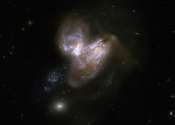New study probes X-ray bursts from low-mass X-ray binaries
An international research team has performed a new measurement of an important astrophysical reaction, 22Mg(α, p)25Al, providing essential experimental data for understanding the light curve of X-ray bursts and the astrophysical ...









